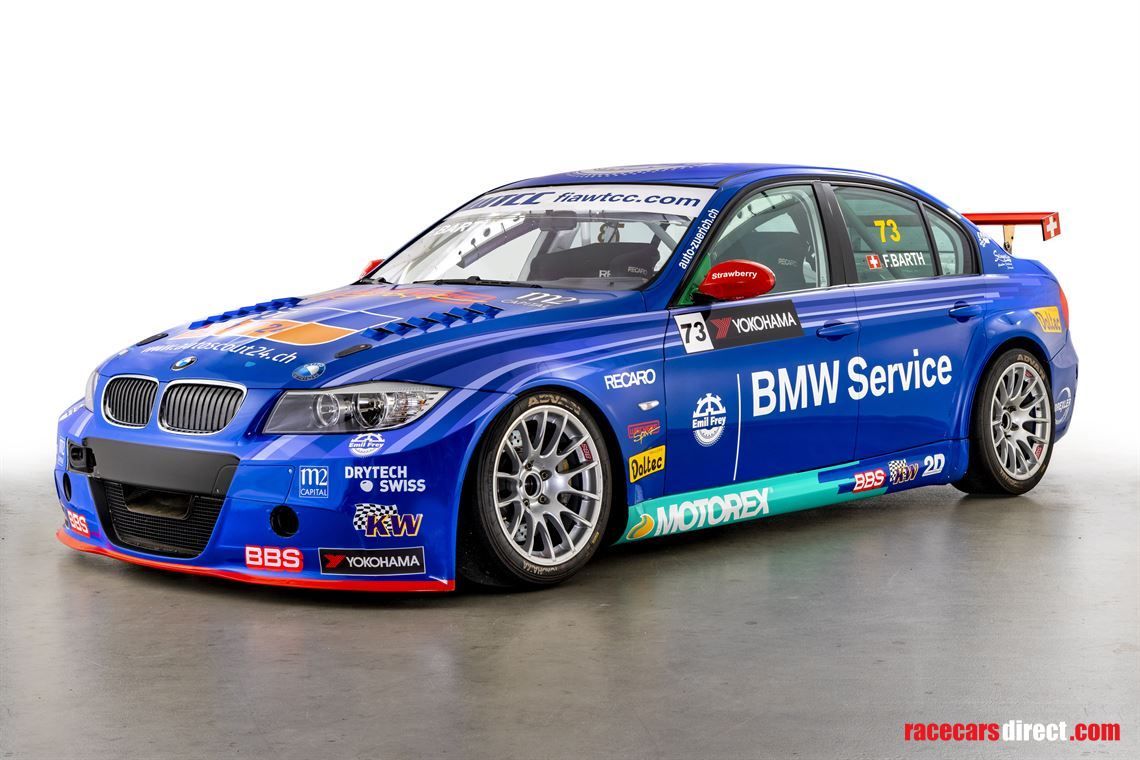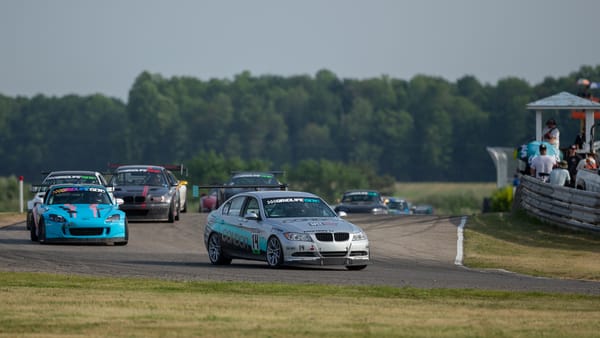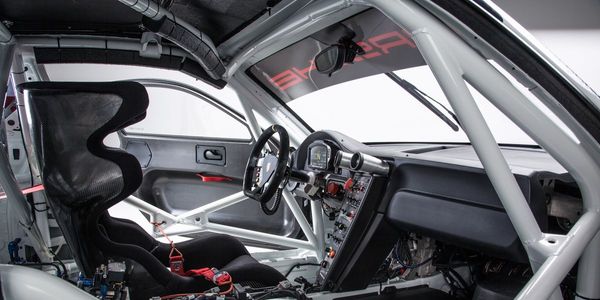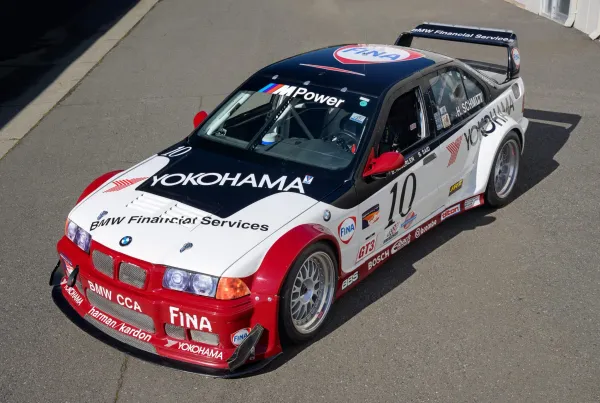We are in an era where almost all professional race cars are official "factory" cars produced by the marque, as opposed to customer-built creations that started life as showroom production cars. It wasn't that long ago that teams had to build, develop, and campaign their own race cars starting with a production street car as their canvas.
Nowadays, for almost anything above club-level racing (and yes, even sometimes for club racing), you're going to find homologated ready-to-race cars that came straight from BMW, Aston Martin, Mazda, Toyota, Porsche, Ferrari, and any number of other companies. Just add your seat of preference, adjust the steering wheel and pedals to suit, and you are ready to race in spec classes like MX5 Cup and GR Cup, or BoP classes like SRO Grand Sport and IMSA GTD.
In a generation where most race teams were still going at it alone without BMW Motorsport factory support, BMW was indeed producing some factory race cars. This WTCC (World Touring Cup Championship) BMW E90 320is was one of those cars.
You can find the sale listing for the car here. The photos are all borrowed from the listing, and are copyright their respective owners: presumably Race Cars Direct, and the seller, Yannick Trautwein.
Note: you can click on any photo to enlarge it.
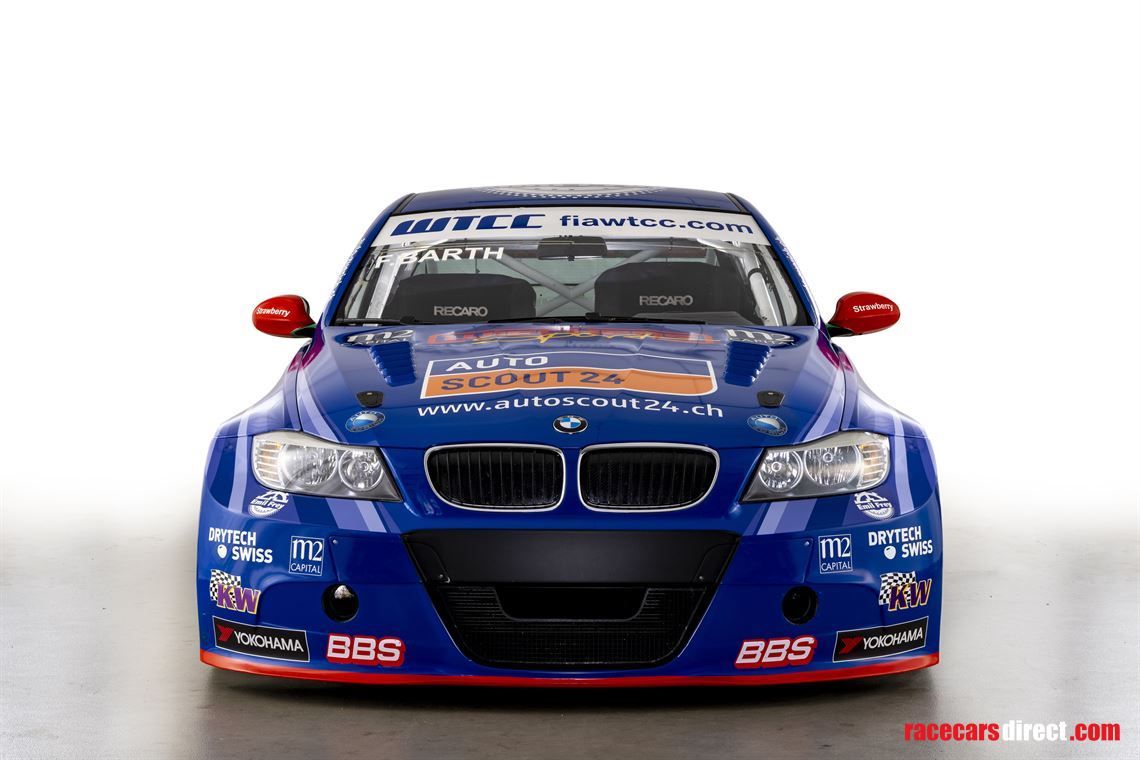
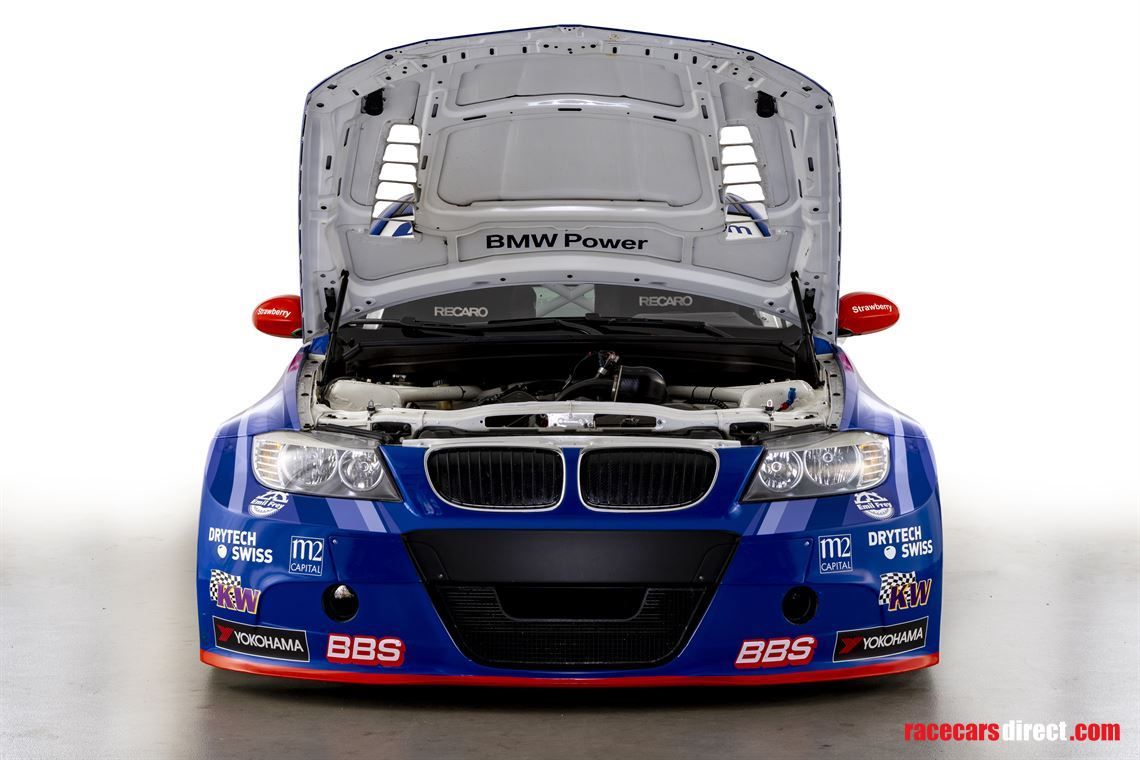
Frontal Area
The first thing you might notice is how wide the fenders are. The head-on front and rear views of this car betray what are otherwise factory-looking lines, stretched much wider than the standard street-destined fare. The front bumper is fully custom and smoothed out quite a bit to be extra slippery.
There are two small circular intakes on the sides of the bumper, presumably for brake duct inlets.
The main "mouth" of the front bumper has a scoop towards the center-top, and then mesh in the rest of the opening. The scoop could be to direct flow to the radiator, while the mesh protects various other heat exchangers.
The kidney grills and thinner headlights indicate this is a late model "LCI" sedan chassis. LCI, or Life Cycle Impulse, was basically the face-lifting mid-cycle refresh for the E9X platform. I will admit that I prefer LCI E9X cars, as they do look a bit more modern when you compare them side-by-side with a pre-facelift car.
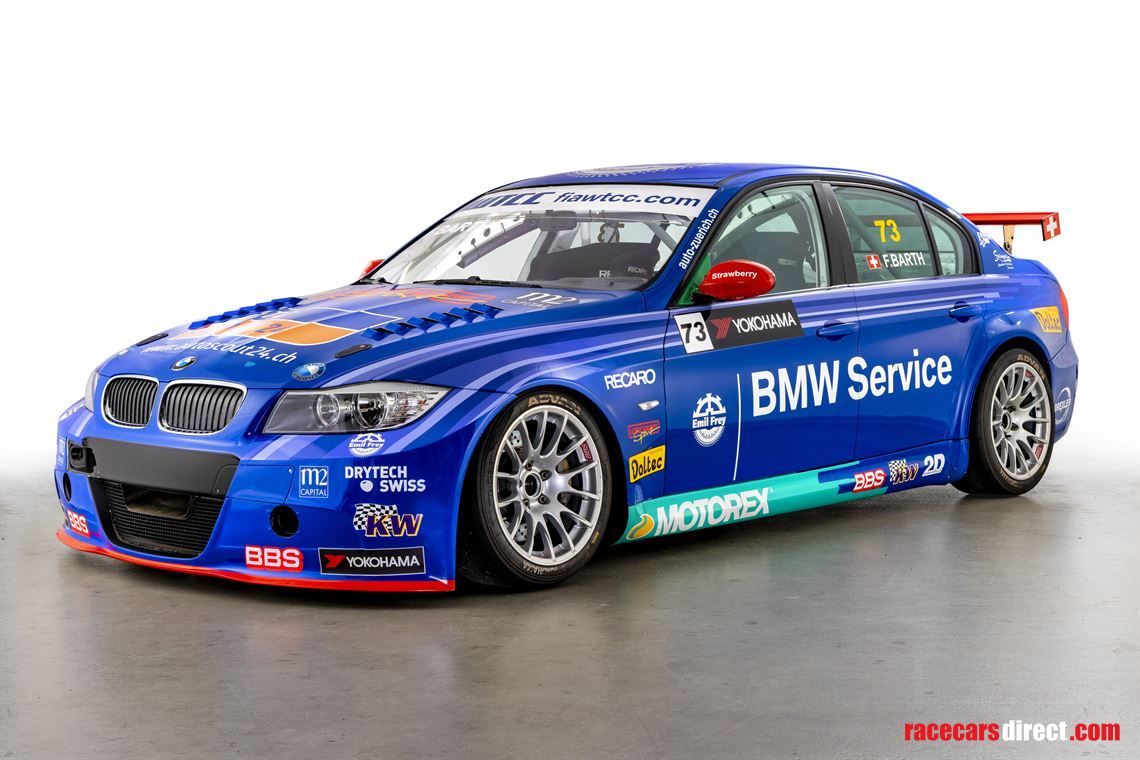
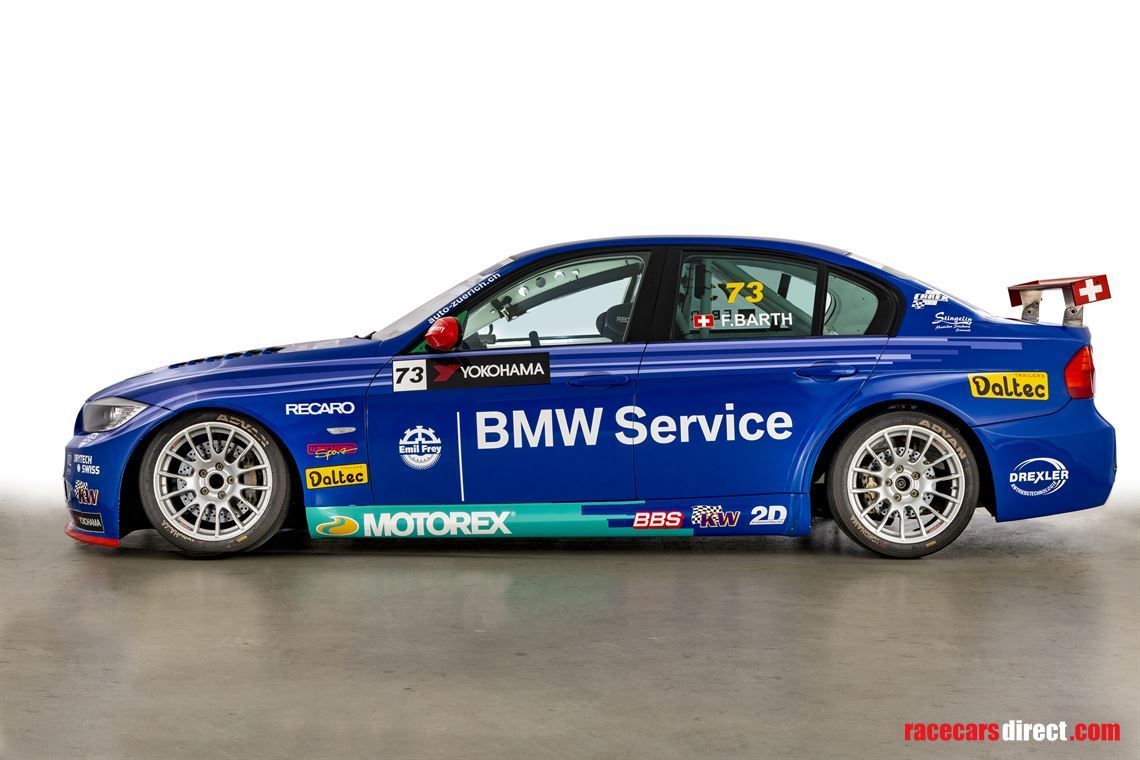
Front 3/4 and Side View
See, doesn't the ultra-wide body work look pretty tame and original from these angles? I think so, at least.
Besides the front bumper, hood vents, and wing, not much looks out of place here. The altered body work is very subtle, even retaining small details like the original crease in the side skirt cladding.
One thing that stood out to me from this view is how much rake the chassis has, at least at first glance. This can be deceiving, though, because the fender arches are modified and may not be cut in the same manner as the originals were (they are definitely enlarged).
It's hard to judge, but it looks like the rear fender arch opening is cut much higher than it is on the production car, so the rake might not be as extreme as it seems at first glance. The angle of the side skirts kind of supports that the rake is fairly mild.
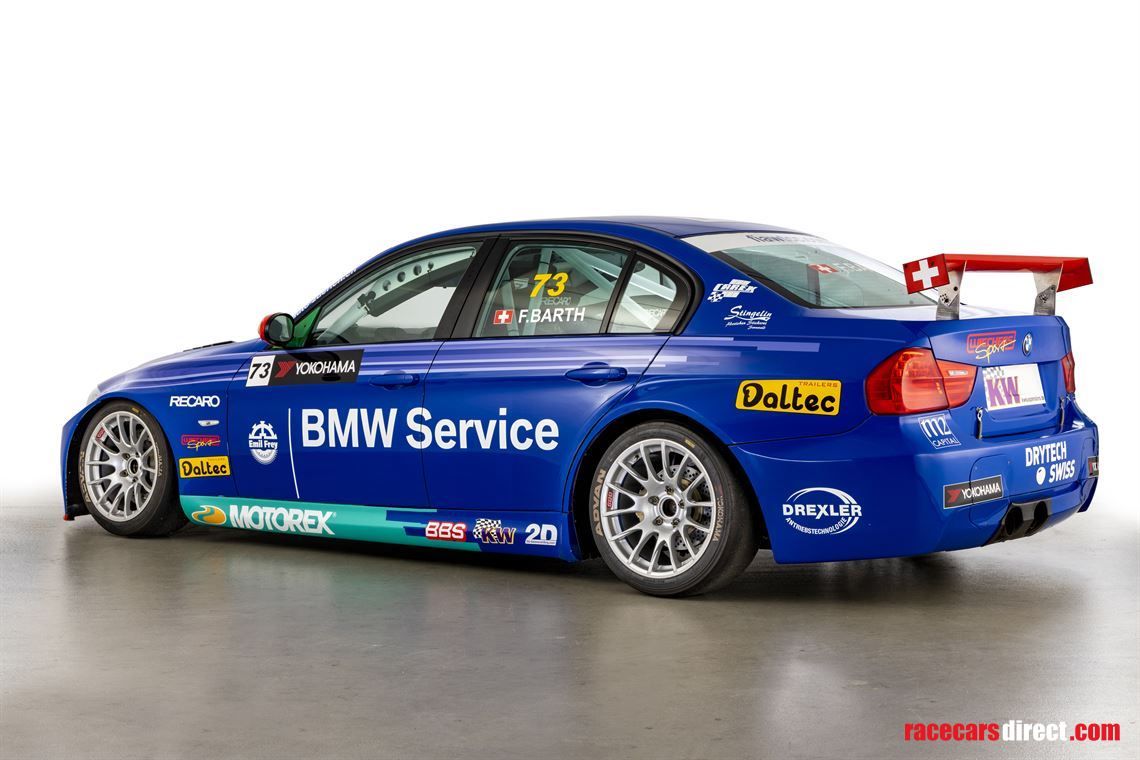
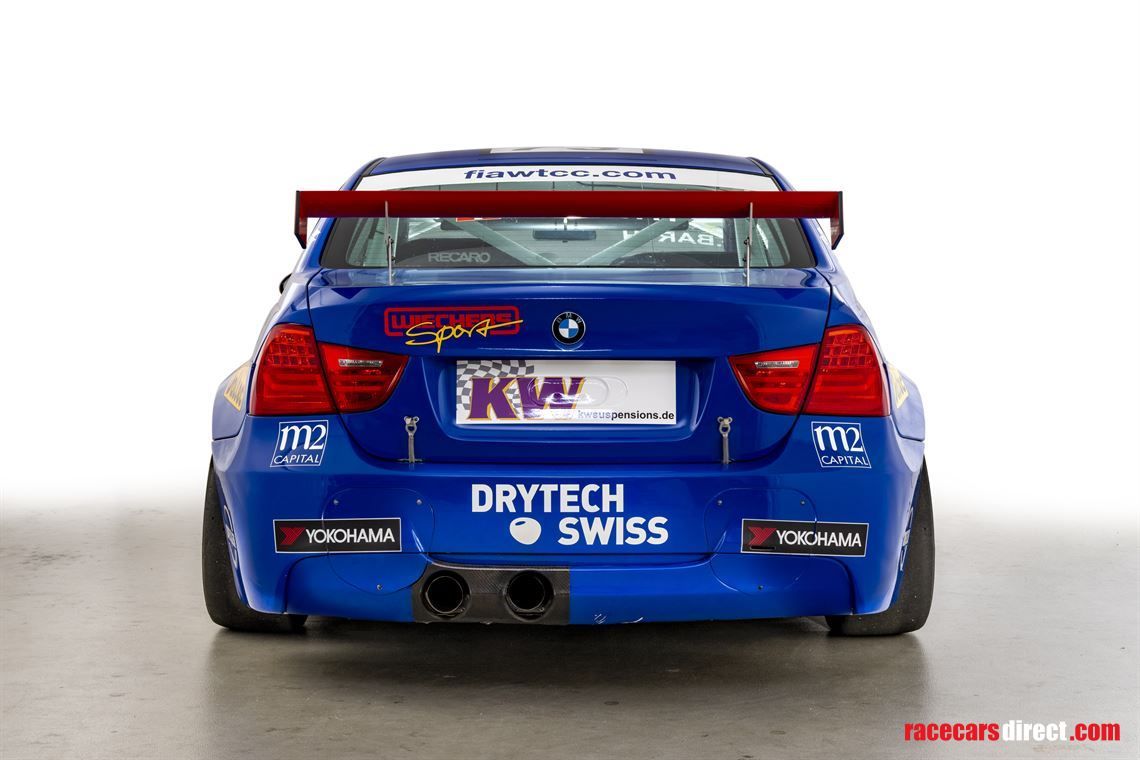
Rear 3/4 and Rear View
Here you can tell how small the wing really is. It has a small chord and is barely the width of the trunk, let alone the exaggerated width of the car. This has to be per the regulations of the class it competed in.
Looking into the gap between the front bumper and the front tire, we can see that there does not appear to be any sort of undertray or splitter. The other views showed no splitter protrusion past the front bumper, but that didn't mean that there wasn't a flat panel underneath to increase front suction. Nevertheless, there doesn't appear to be much of anything there.
The rear bumper is again a custom piece, and it appears to have some sort of oval shaped access panels on either side. I am not sure what those are for. The dual exhaust tips are off-set in a somewhat odd fashion.
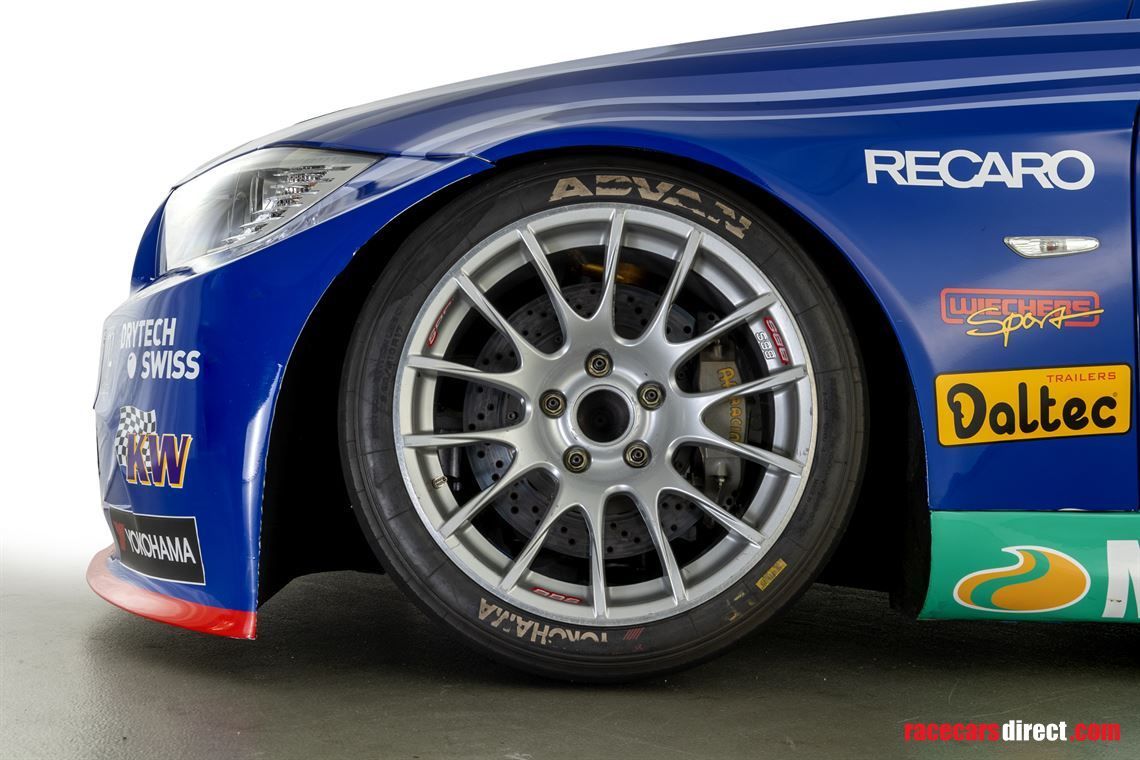
Front Wheel/Brakes
The car sports forged BBS racing wheels, as is typical of many BMW races cars, but surprisingly these are still 5-lug and the car has not been converted to centerlocks. Class regulations, surely.
The AP Racing brakes look deceivingly large, but that is in part because the wheels are only 17" diameter. The rotors are 332x32mm: thicker than stock, but not much larger than OEM E90 330i front rotors, which were 330x24mm.
I was not able to make out the tire size of the Advan racing slicks, but again these may be a rule-book mandated size "spec" tire. Judging by the scale of the car and the other exterior photos, my guess is that the tires are in the range of 240/610-17 (edit: I was right on the money, confirmed by these specs). The tires are not really that large given the wide body work, but they've probably done a lot of trickery with the suspension geometry and track width of the car as well.
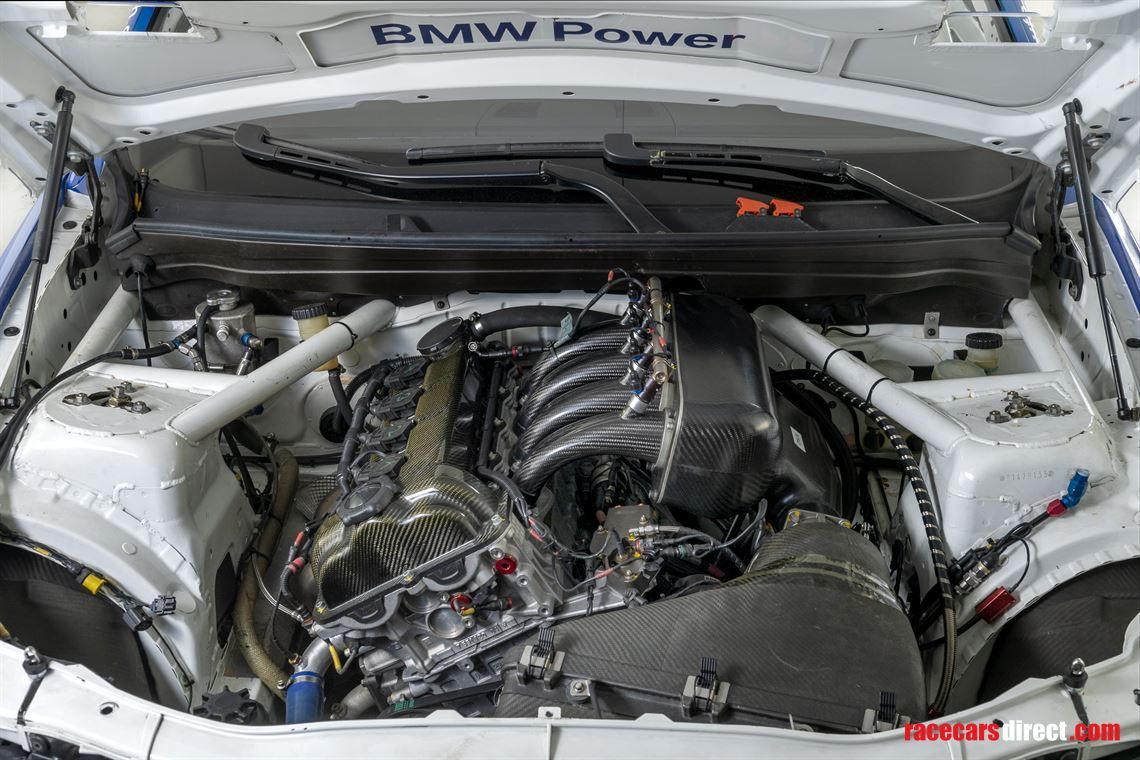
Engine Bay
The WTCC 320is is powered by BMW Motorsport's P45 engine, a 2.0L, high-revving, aluminum-block, normally aspirated 4-cylinder. At least in the 2006 trim (which was before this LCI chassis would have been made), the P45 made 275bhp @ 8400 RPM and 178tq @ 7250 RPM.
You can find the full specs for the engine here.
While the engine is incredibly beautiful, we can't make out too much else from this angle of the engine bay. The strut towers are stitch welded as to be expected. The tops, and likely the backsides of the strut towers are nicely integrated with the roll cage.
There are two toggle switches on the cowl, which are likely engine kill and fire suppression activation switches. The engine harness is all, of course, custom motorsport grade "mil-spec" wiring.
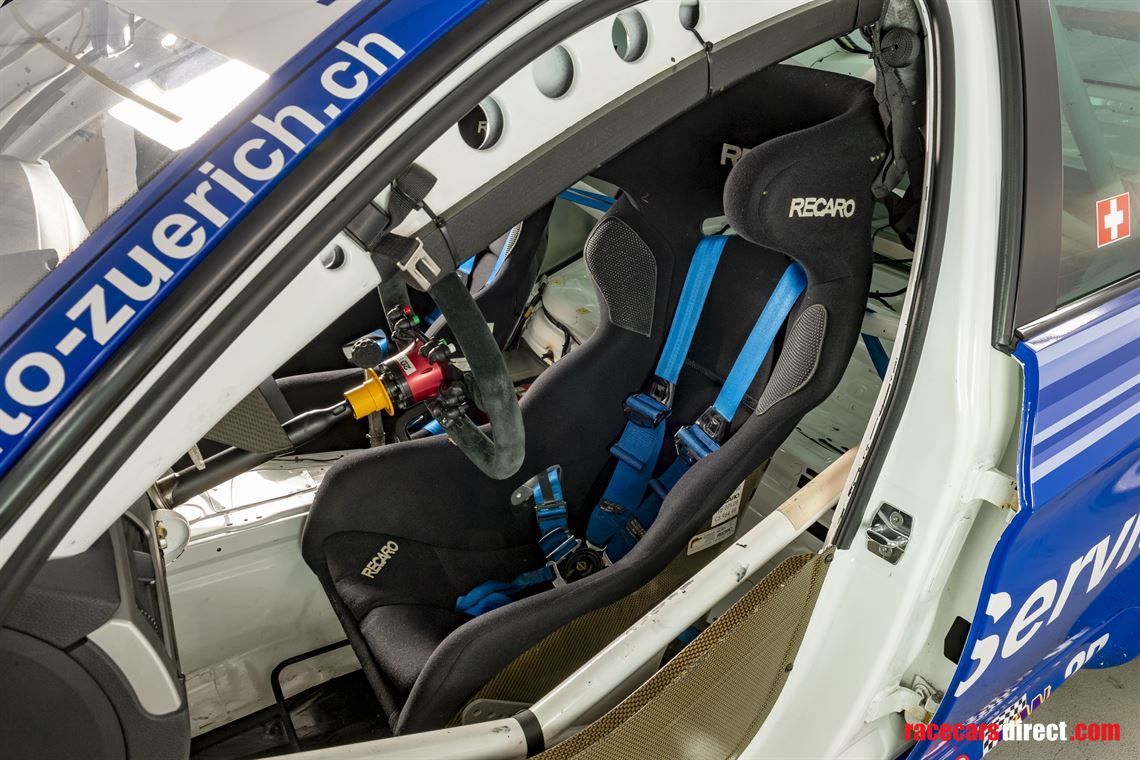
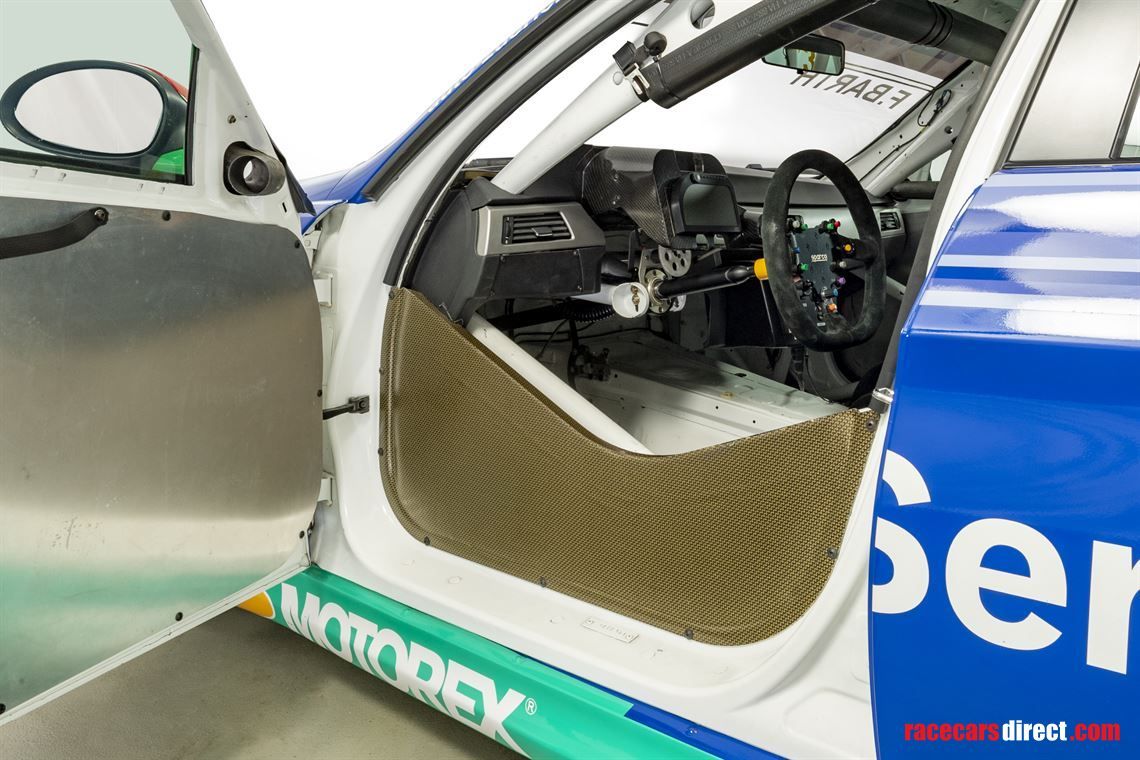
Interior - Door View
The carbon-kevlar cover inside the door is something I've never seen before. The door itself has a basic sheet aluminum skin over it, with a nylon pull. You can tell that the roll cage door bars don't protrude outwards much at all, since the door panel is flat and carbon-kevlar cover also fits inside there. I truly don't know what the purpose of that cover is.
Similar to the E46 M3 GTR, the roll cage a-pillar bars have huge, prominent gussets. These gussets serve the same purpose as an FIA-style a-pillar support bar in helping ensure the long a-pillar bar doesn't collapse in a rollover.
The rest of the safety equipment looks quite modern and nice. The aftermarket steering column is attached to an adjustable mount setup that is tied into the roll cage's dash bar. The bolts on the side look to offer a couple of inches worth of vertical adjustment for the steering column.
The seat is a carbon-kevlar Recaro containment seat. The harnesses are 2" wide HANS-style belts, which may not be original to the car. The car was built in a transitionary period when HANS devices were really gaining in popularity, and just-then becoming mandatory in many professional racing series. HANS devices were made mandatory in Formula 1 in 2003, and in NASCAR in 2005. Lower levels of club racing didn't start mandating them until some 10+ years later.
Given that the WTCC was an FIA-sanctioned series, I suppose it's very likely that this car had 2" belts and the driver wore a HANS device at the time.
Lastly, and similar to the PTG E36 M3, this car has an air scoop mounted to the backside of the side view mirror. There is no visible opening on the outside of the car, though. I am not sure how this piece is constructed or mounted, but if you have any further info about it, please let me know. I want to replicate it.
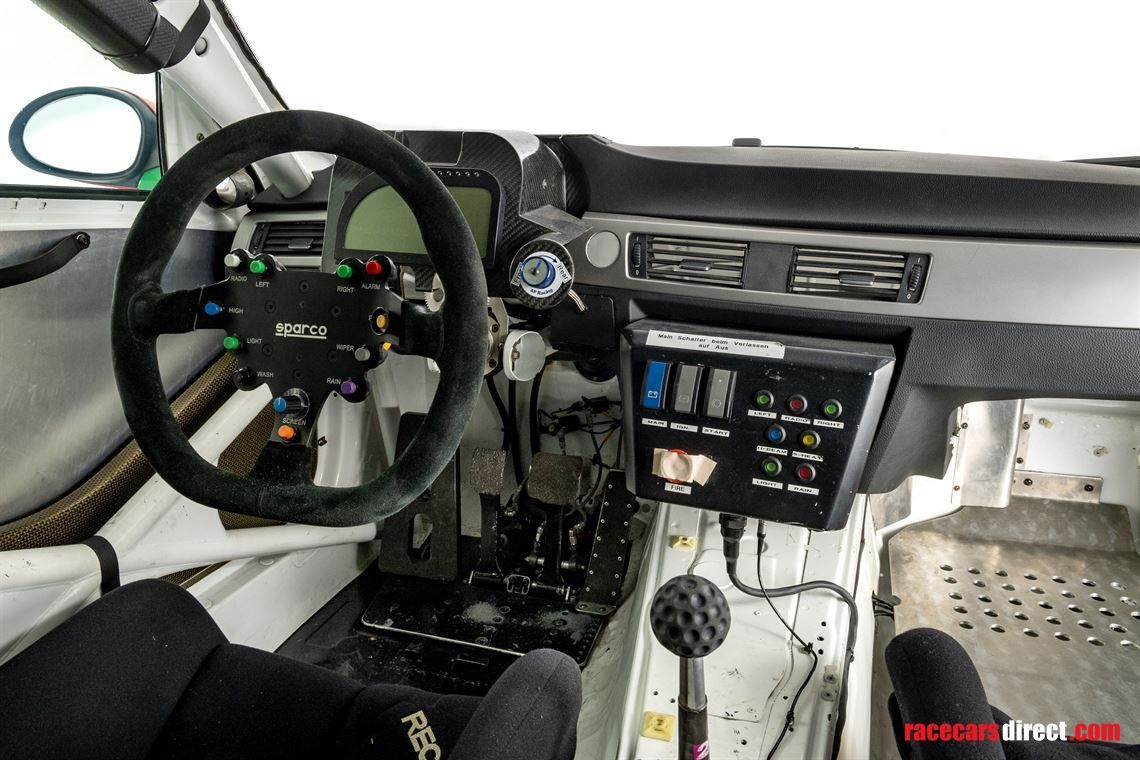
Interior - Cabin
The cabin is relatively sparse in comparison to the interior of today's GT3/GT4 cars. There is one digital dashboard screen, and the center console only houses a few switches for ignition. The rest of the center console features colored warning indicators.
The steering wheel holds most of the controls, except for the brake bias knob that is next to the digital dash display.
Here are some of the controls I can make out from the steering wheel, and what I think they do. Some are obvious. Counter-clockwise order:
- Radio (top left, white): Push to talk function (crew and spotter).
- Left & Right (top left and top right, green): I'm not sure on this one, perhaps turn signal indicators? Not sure why those would be on a race car, though.
- High (middle left, blue): Flash the high beams.
- Light (middle left, green): Turn on head lights.
- Wash (bottom left, black): Washer nozzles for windshield.
- Screen (bottom center, orange): Toggle which screen the digital dashboard is displaying.
- Rain (bottom right, purple): Turn on rear rain light. (?)
- Wiper (center right, grey): Turn on front windshield wipers.
- Unknown (center right, yellow): I can't see a label for this one. This is the only button with a shroud around it, so it was probably important.
- Alarm (top right, red): Acknowledges/clears any alarm warning on the digital dashboard.
The blue rotary knob that is bottom-center, above the orange Screen button, appears to be an ABS setting knob, although it is not labeled. An ABS knob typically adjusts the threshold of the system, so the driver can dial in the ABS for any given tire and track conditions.
Lastly, the pedal box is floor mounted, and the pedals are all very close to each other. That leaves a lot of real estate for a large dead pedal (one of my favorite creature comforts in a race car).
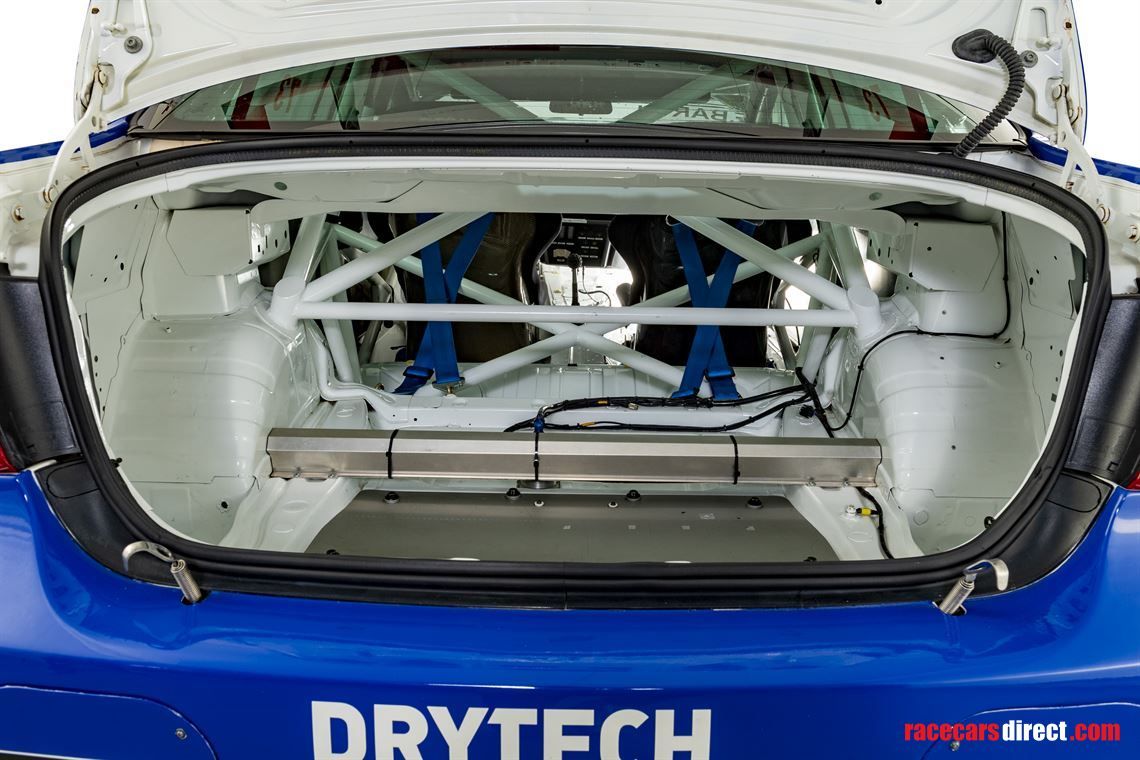
Interior - Trunk View
The cage integrates the rear subframes, and the rear-most roll cage tubes terminate on top of the rear shock tower. You can see how sparse and clean the chassis wiring is.
The trunk floor storage bin seems to have been removed and replaced with a flat panel. The wiring visible in the center leads me to believe there might be a fuel cell mounted under that panel, and the panel serves as a firewall to the cabin. I am not sure on this, though.
Of note is the way that the harnesses are mounted – downwards and well far back of the seats, attached to the small bulkhead at the base of what would have been the back seat.
This was (and is?) the common FIA-approved method of mounting harnesses, but it makes my spine hurt just looking at it. Most modern sports car harness manufacturers recommend the belts be mounted to a harness bar as close to and as level as possible to the occupant's shoulders, in order to prevent compression of the spine in an accident.
There is no harness bar at all in this car, as is the case with many FIA homologated sports car roll cages. In addition to the potential spinal compression from the belts being anchored so low relative to the occupant's shoulders, the excess length of the belts, some two-to-three feet further back than a harness bar would be, allows the nylon belts to stretch considerably more during an impact.
The belts are crossed over each other in an X to help prevent them from spreading apart and allowing the occupant to escape the belts.
I don't know why these methods were in favor at the time, but hindsight being 20/20, I'd be uncomfortable driving with that setup. I'm not sure when harness bars became FIA homologated, but I do know the new BMW M4 GT3 and GT4 cars have harness bars that are very close to the seatback and level with the harness pass-throughs on the seat.
In Summary
Clad in a beautiful livery, this BMW factory race car is bound to catch anybody's eye. I enjoyed browsing through these photos and day-dreaming about the car, and hope that you did too.


